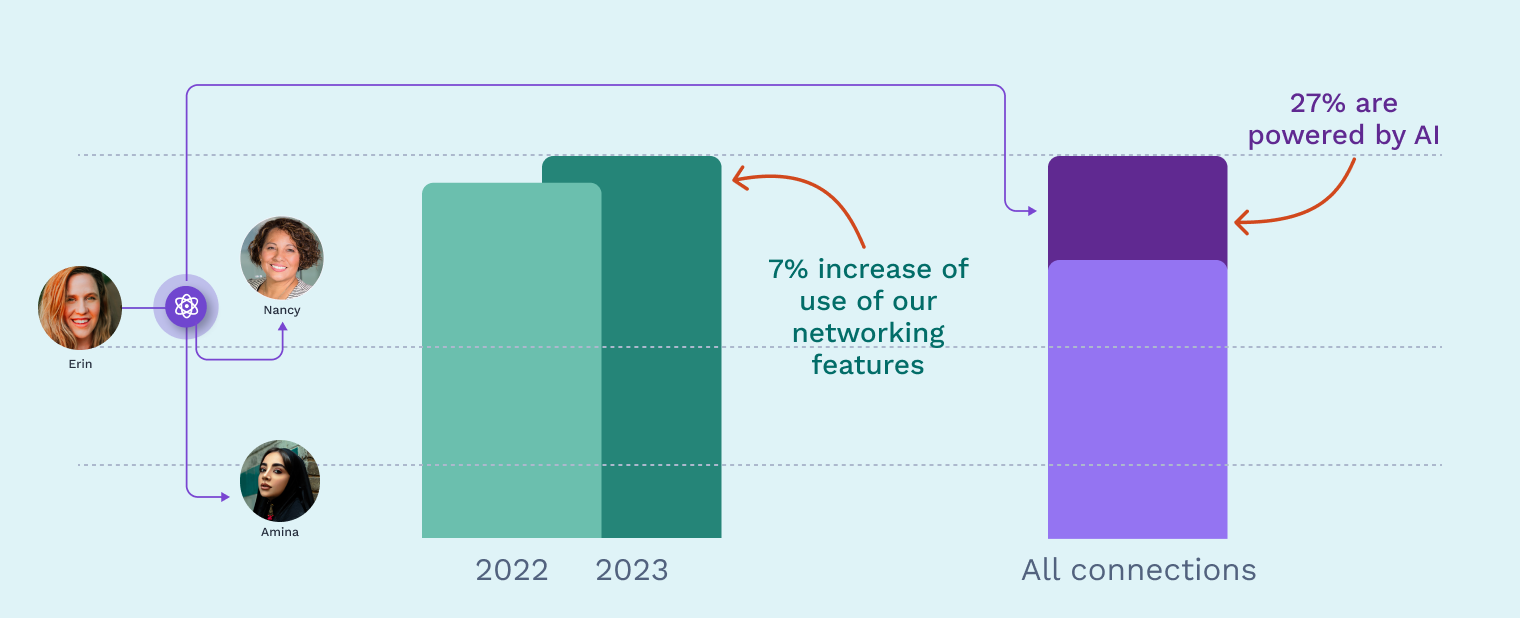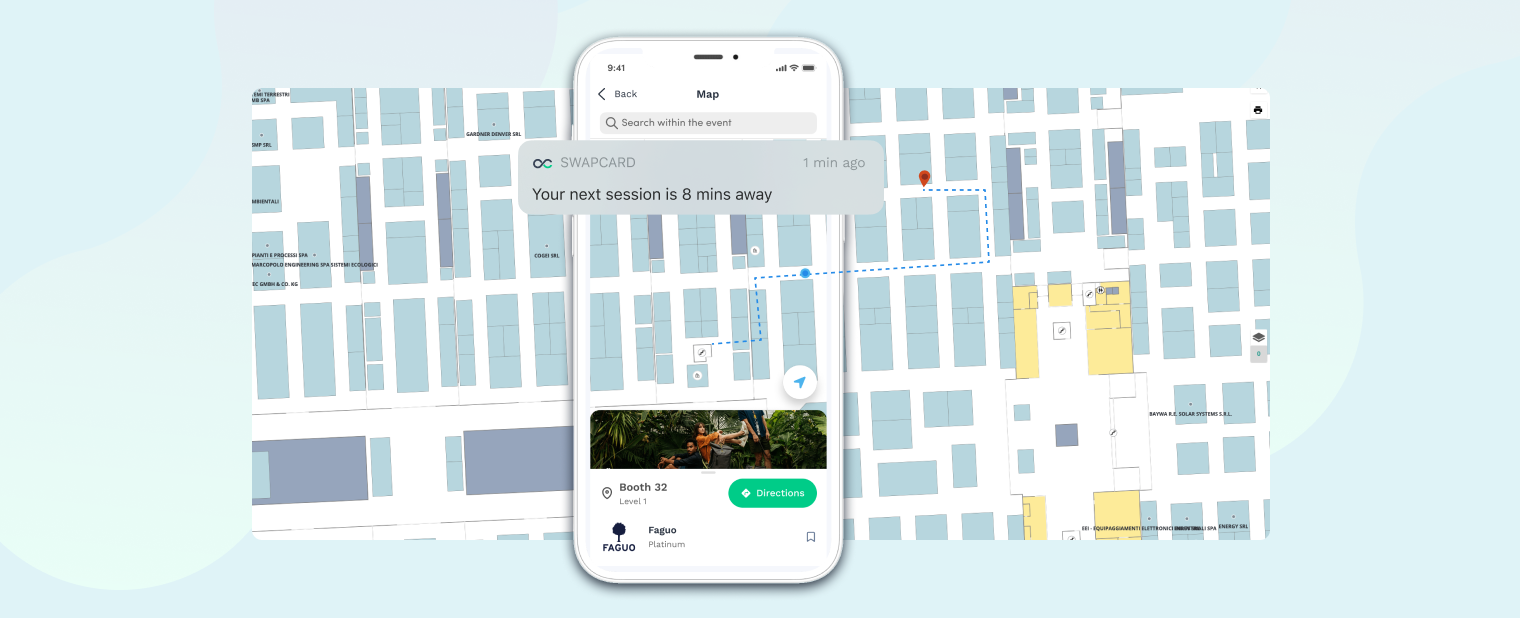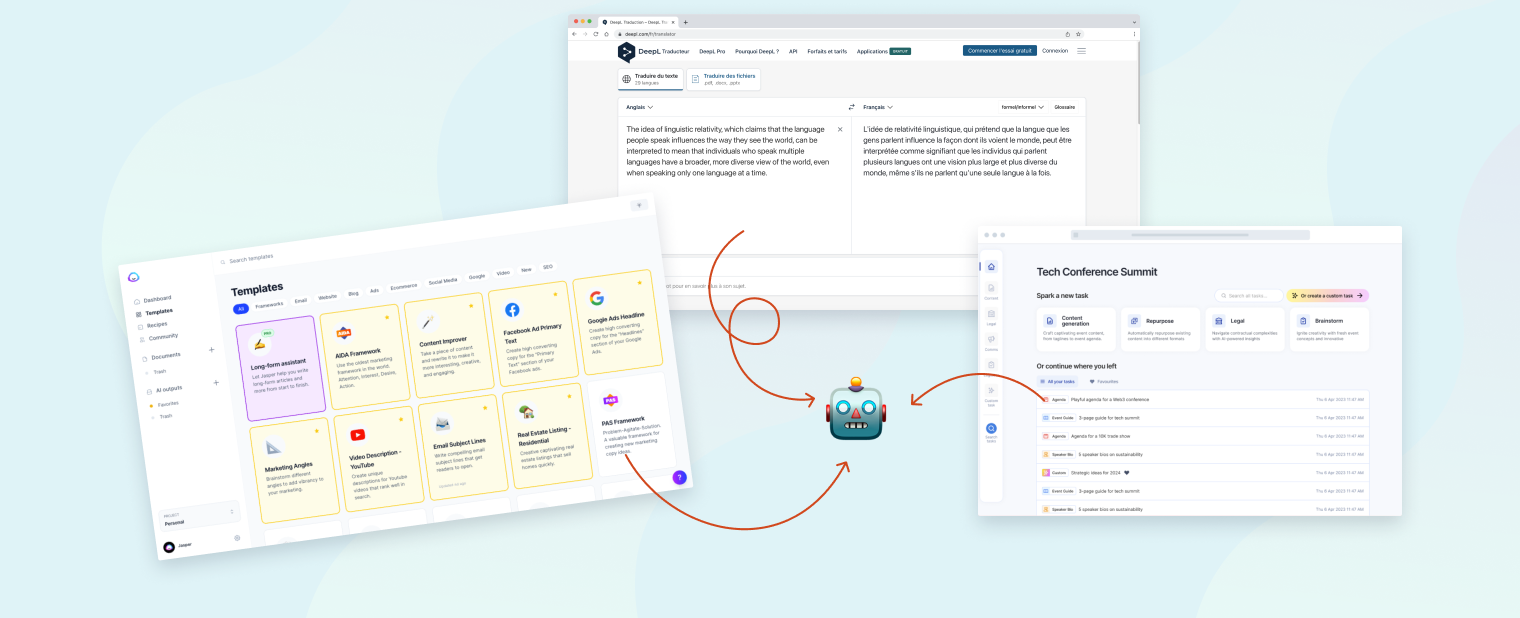At the start of a new year, it's important to assess the challenges and successes of the past year in the context of large exhibitions. Understanding these trends and their implications is crucial for devising effective strategies and ensuring continued growth and innovation in the exhibition industry.
In the last year, four trends emerged as focal points for the industry: Digitization, smart networking, blue dot technology, and generative AI.
Keep reading to find out more about these four key trends, plus tips for how to use them to inform your strategy going forward.
Digitization
A 2023 survey of the global exhibition industry revealed that the "Impact of digitalization," (aka digitization), emerged as the second most crucial concern globally for leading businesses. It held the leading position alongside "Competition with other media" from 2015 to 2022. These results underscore the pivotal role digitization plays in shaping the exhibition industry.
In the context of the exhibition industry, digitization involves the transformation of various aspects of events, such as attendee registration, marketing, content delivery, and data collection, into digital formats. This shift allows for more efficient management, enhanced accessibility of information, and the utilization of technology to streamline event processes and improve attendee experiences.

Event tech platforms and apps provide the necessary infrastructure and tools to execute digitization effectively. By adopting event tech solutions such as Swapcard, organizers are able to streamline attendee registration, offer innovative marketing channels, facilitate digital content delivery, and achieve seamless data collection and analysis.
These tools are invaluable for exhibitors—boosting visibility and helping generate leads by setting up targeted networking chances with detailed stats. This means exhibitors can fine-tune their strategies and make the most of their investments, all while keeping up with what their audience really wants.

And let's not forget — going digital is also good for the planet! Using digital materials and communications means less paper waste and more eco-friendly events. Plus, offering virtual attendance options doesn’t just save trees, it makes events more accessible to a wider audience. It's a win-win that helps the planet and ensures everyone can join in.
Smarter Networking
Networking at trade shows is a catalyst for growth. It's a chance to showcase products or services, generate leads, and explore potential partnerships. Face-to-face interactions create a lasting impression, fostering trust and laying the groundwork for future business endeavors.
However, traditional networking at trade shows often lacks efficiency and personalization. Attendees navigate these events blindly, relying on chance encounters that may not align with their specific interests or needs. The sheer volume of participants can make identifying and connecting with the right people challenging, leading to missed opportunities and superficial interactions.
Large exhibition organizers are solving this challenge by implementing AI-powered networking — also known as AI matchmaking.
.png?width=1520&height=618&name=In-Article-AI%20Animation%20(1).png)
AI matchmaking is when attendees are matched with other attendees based on interests, needs, and topics. This exciting technology transforms networking from a hit-or-miss endeavor into a strategic process where every connection is intentional and meaningful.
At Swapcard, we’ve seen a 7% increase in the frequency of use of our networking features in 2023 vs. 2022 —attendees are big fans!
Today 27% of all connections via the Swapcard app are powered by AI, and that’s not slowing down anytime soon.

➡️ Looking ahead: Leverage Smart Networking Tools
Invest in platforms or technologies that facilitate smarter networking among exhibitors and attendees. Focus on creating personalized matchmaking, making it easier for participants to connect with relevant contacts and foster meaningful interactions.
Blue Dot Technology and Location-based Messaging
Blue dot technology (also known as indoor geolocation) pinpoints the exact geographic position of an object or individual, using various technologies like GPS, Wi-Fi, or phone networks. The most popular example is when Google Maps helps you find a restaurant near you.
In the trade show industry, blue dot technology is being used to offer real-time navigation assistance on the trade show. This technology is a lifesaver at large exhibition spaces where it can take 10+ minutes to walk from one end of the show floor to another. Blue dot technology also enables organizers to maximize ROI by analyzing on-site traffic patterns, allowing them to strategically sell high-traffic spaces at premium prices with solid data-backed insights.

However, in recent months, large exhibition organizers have been looking for new ways to use this same technology to drive higher exhibitor ROI and create a more tailored experience for attendees. The answer came in the form of location-based messaging.
Location-based messaging (sometimes called geofencing) refers to the use of GPS, Wi-Fi, or cellular data to establish virtual perimeters or boundaries around physical locations.
Here are some ways you could use location-based messaging at your next exhibition:
- Trigger personalized promotions as attendees enter, exit, or move within designated areas,
- Notify attendees about popular attractions nearby in real-time,
- Inform attendees of nearby professionals sharing similar interests,
- Push notifications in real-time if you find that a booth in a specific location is underperforming.
But of course, with great power comes great responsibility. Location-based messaging has to be used judiciously: if attendees are getting messages every 30 seconds, it defeats the purpose of the technology.
➡️ Looking ahead: Utilize blue dot technology and location-based messaging for personalized experiences
In the upcoming year, more organizers will leverage geolocation and geofencing technology to create a more personalized experience for attendees. The benefits included higher attendee engagement, increased conversion rates for exhibitors, and lower advertising costs.
Generative AI
In 2023, generative AI won over trade show organizers and content marketing teams alike. Generative AI is a branch of artificial intelligence (AI) that uses learned patterns and data to generate new content autonomously. The aim is to limit the need for direct human input for each individual piece of content created.

Here are some of the common uses of generative AI by large exhibition organizers over the last year:
- Rapid sentiment analysis of attendee feedback using generative AI tools like Project Spark.
- Automated translations and closed captions that foster an inclusive environment among diverse attendees.
- Creation and repurposing of content, such as personalized event guides, engaging presentations, and visually stunning booth designs.
- Automated segmentation of event audiences for tailored, personalized experiences based on attendee behaviors and preferences.
By leveraging generative AI, trade show organizers can revolutionize attendee experiences, personalize content delivery, and streamline operational tasks, freeing up time for more strategic event planning.
➡️ Looking ahead: Opt for an AI-powered event platform
Generative AI will continue to make remarkable strides in the upcoming years. Adopting a dedicated AI-powered event platform will consolidate all your event management tasks, offering a centralized hub for all your needs.
Conclusion
Understanding and harnessing these trends—such as increased digitization, smarter networking strategies, location-based messaging for personalized experiences, and adoption of AI-powered tools—will enable organizers of large exhibitions to create immersive, tailored experiences that captivate attendees, optimize operational efficiency, and lead the charge in innovation.
Ready to propel your events into the future?
.png)



-1.png)







